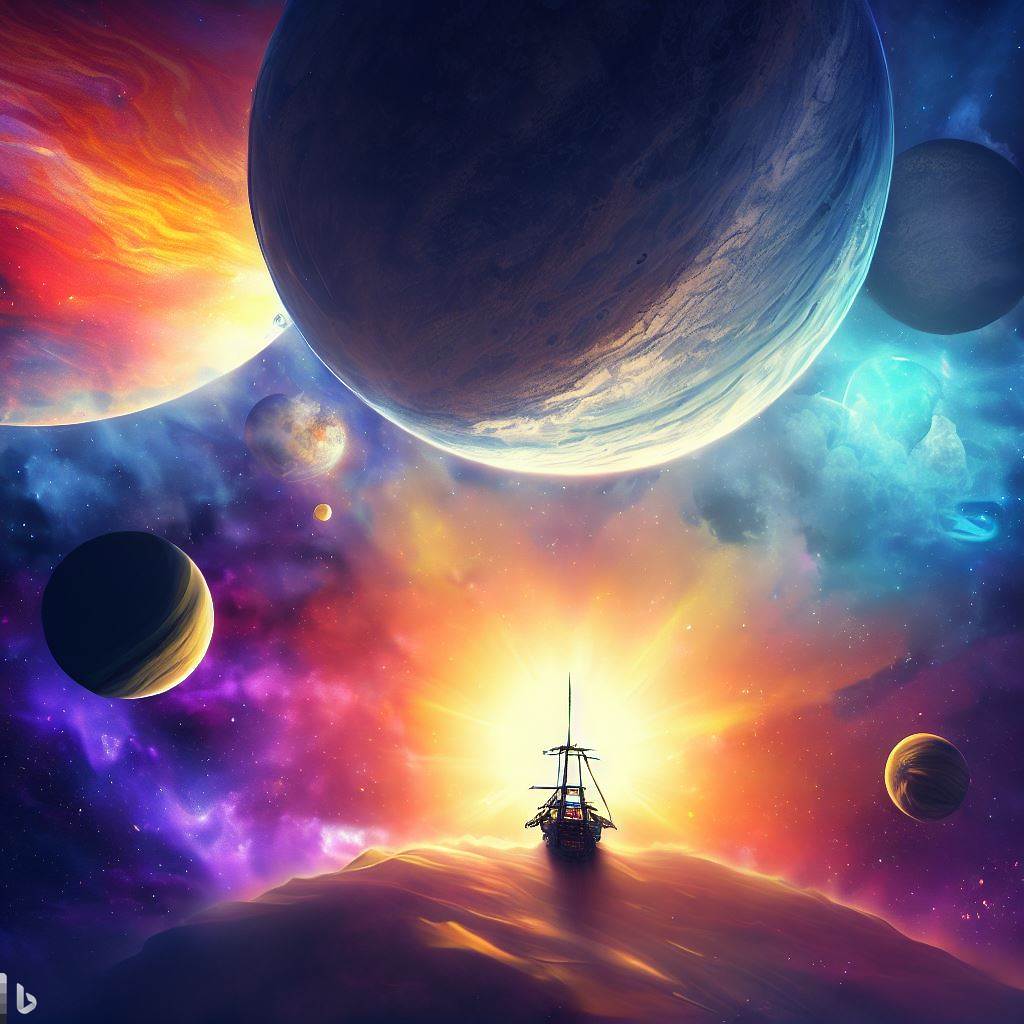Introduction:
Welcome back, space enthusiasts, to another thrilling episode of Video Geek Sparrow! Today, we invite you on an extraordinary journey through our magnificent Solar System. From the blazing heart of the Sun to the mysterious depths of the outer planets, we’ll uncover captivating facts about each celestial body along the way. So, buckle up and prepare for an astronomical adventure like no other!
The Sun: Cosmic Furnace and True Heavyweight
Our journey commences at the heart of the Solar System, where a cosmic furnace resides—the mighty Sun! With a diameter over 1.3 million times that of Earth, it reigns as the true heavyweight champion of our celestial neighborhood. Did you know that the energy produced by the Sun’s core takes about 40,000 years to reach its surface, and then just a mere 8 minutes to travel the vast expanse of space and reach us on Earth?
Mercury: The Hot-and-Cold World
Moving outward, our first stop is the closest planet to the Sun—Mercury. This small rocky world boasts peculiar characteristics. With extreme temperature variations between scorching days and freezing nights, it’s a destination of dramatic hot-and-cold swings. Here’s a mind-blowing fact: Mercury’s surface is pockmarked with countless craters, as it lacks a substantial atmosphere to shield it from cosmic impacts.
Venus: Earth’s “Evil Twin”
Next, we arrive at Venus, often referred to as Earth’s “evil twin.” This neighboring planet experiences a runaway greenhouse effect, resulting in a scorching atmosphere filled with thick clouds of sulfuric acid. But that’s not all—Venus spins in the opposite direction compared to most other planets, making it a true oddball in our Solar System.
Earth: Our Vibrant Blue Marble
Now, let’s take a moment to appreciate the beautiful blue marble we call home—Earth. This vibrant planet teems with life and natural wonders, providing an extraordinary environment for exploration. The Earth’s atmosphere, composed of several layers, boasts the ozone layer in the stratosphere, shielding us from harmful ultraviolet radiation and fostering a thriving biosphere.
Mars: The Red Planet
Leaving Earth behind, we venture towards Mars, often referred to as the “Red Planet.” Mars has long captivated the imagination of scientists and explorers. Its rusty appearance comes from iron oxide, or rust, covering its surface. An exciting fact awaits: Mars is home to the tallest volcano in the Solar System—Olympus Mons, standing at a staggering height of about 13.6 miles (or 22 kilometers)!
The Asteroid Belt: Fragmented Remnants
Continuing our journey, we encounter the mysterious and often misunderstood Asteroid Belt. Situated between the orbits of Mars and Jupiter, this region is home to countless rocky fragments left over from the formation of our Solar System. Contrary to popular belief, the Asteroid Belt is not densely packed with asteroids, as the average distance between them is vast, providing ample space for spacecraft to navigate safely.
Jupiter: The Colossal Gas Giant
Our next destination is the mighty gas giant—Jupiter! This colossal planet’s mass surpasses that of all the other planets combined. Its mesmerizing feature, the Great Red Spot, is a massive storm that has been raging for centuries. Hold onto your seats for this astounding fact: Jupiter boasts a whopping 79 known moons, with Ganymede, the largest of them, even surpassing the size of the planet Mercury!
Saturn: The Ringed Beauty
Moving further outward, we arrive at the ringed beauty of our Solar System—Saturn. Its iconic rings, composed mostly of ice particles, make it a truly stunning sight. However, did you know that Saturn’s rings consist of countless individual ringlets, each made up of innumerable particles ranging in size from tiny grains to enormous chunks of ice?
Uranus: The Mysterious Ice Giant
Venturing deeper into the outer reaches, we encounter the ice giant—Uranus. This mysterious planet lies on its side, with its axis of rotation tilted almost 90 degrees relative to its orbital plane. Here’s an extraordinary fact: Uranus showcases a unique feature called “retrograde motion,” where some of its moons orbit in the opposite direction compared to the planet’s rotation.
Neptune: The Distant Ice Giant
Finally, our journey concludes at Neptune, the most distant planet from the Sun. This ice giant’s deep blue color emanates from the presence of methane in its atmosphere. Brace yourself for this astonishing fact: Neptune experiences the strongest winds in the Solar System, with gusts reaching supersonic speeds of over 1,200 miles per hour (1,930 kilometers per hour)!
Pluto and the Enigma of Planet 9
Before bidding farewell, let’s briefly visit two intriguing objects on the outskirts of our Solar System. First, Pluto—a dwarf planet that was once considered the ninth planet. Despite its small size, Pluto showcases a diverse terrain, including icy mountains and a heart-shaped region called Tombaugh Regio. And speaking of the unknown, scientists suspect the existence of a mysterious “Planet 9” lurking in the distant realms of our Solar System—an enigmatic world yet to be discovered.

Conclusion: Eyes on the Stars, Curiosity Burning Bright
And there you have it—a breathtaking journey through our Solar System, courtesy of Video Geek Sparrow. From the scorching Sun to the elusive Planet 9, we’ve explored the wonders of each celestial body, uncovering captivating facts along the way. Remember, the universe is full of mysteries waiting to be explored, so keep your eyes on the stars and let your curiosity burn bright. Until our next cosmic adventure, fellow space enthusiasts!

